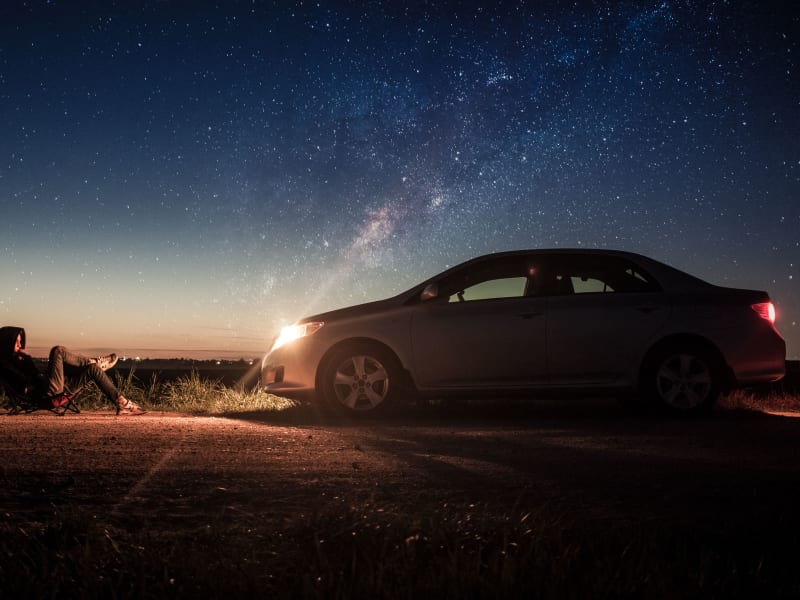Driving safely always requires plenty of attention but driving at night can be especially dangerous. After the sun goes down, visibility decreases and our ability to stay alert is reduced. And even worse, at night, many may be in influence of alcohol or are tired after a long day of work; and are more likely to be erratic and prone to accidents. In case you fall prey to an accident and get your car smashed bad, you should get it fixed from a collision repair service provider as they can have it repaired in not time.
If you are a new driver looking for some tips, or an experienced driver seeking out some refreshers, here are seven tips to help you drive safely at night.
1. Clean your windshield and mirrors
One of the most difficult parts of driving at night is dealing with the glare from other drivers’ headlights in the mirror. A good way to increase visibility and decrease the glare is to clean both your windshield and mirrors.
First, rinse off the windshield and wipe it with a microfiber cloth. Use a gentle, eco-friendly cleaner to get tough spots. Also pay attention to the angle of your mirrors– if incorrectly positioned, you can end up with more blind spots.
2. Check your headlights
Since visibility is so limited in the dark, your headlights are the best way to increase your chances of being seen. Keeping your headlights clean, positioned correctly and checking them regularly is essential to protect your safety and preventing a run-in with the law.
Most people getting pulled over for not having their lights on were unaware that one was burned out. Remember that your back lights can burn out as well, so every couple week ask someone to check all four lights for you.
3. Plan your night ahead
Summer is over, and so the days are getting shorter, so it is easier to miscalculate how long your evening out will last. And, as a result, you might need to drive back in the dark. If it is later than you thought or you have been drinking, you might decide to give up on driving back and take a taxi or bus home – which is by far the smartest decision.
However, you can easily avoid such inconvenient situations by planning your night ahead. Sticking to your schedule does not have to be in the way of your fun evening, but it can help you be more confident and feel safer on your way back.
If something happens, you can be sure to have your back covered by an expert DUI Lawyer, but it is always recommendable to understand your limits and stick to an evening plan. You can always decide that, just for tonight, your other half is the designated – and sober – driver!
3. Keep your distance
While it is always important to remain at a safe distance from other vehicles, this becomes doubly important at night. In the dark it becomes more difficult to judge distances, and other drivers are more likely to be under the influence or drowsy.
A good rule of thumb is to stay behind the line of your headlights. Normal headlights light up a couple feet of road ahead of you, so look for the edge of the light and don’t let it touch another car.
4. Stay alert
At night, lots of pedestrians take the evenings to go for a walk or run, and they can be difficult to see. Animals such as deer are also the most active during the night.
It is essential that you stay fully alert during the night. If you must, drink some coffee or take frequent rests to refresh yourself and keep your blood moving.
5. Minimize distractions
With your natural attention span shortened, it is important to minimize distractions at night.
Distractions include listening to music, fiddling with your radio, chatting on the phone, texting, eating, etc. Being distracted means that your reaction time slows down, and the limited light means you are less likely to see obstacles in the road and slower to respond.
6. Dim your dashboard lights
Many people don’t realize that often the problem is not the low light but the contrast between light and dark that confuses the eye and makes it hard to see.
Leaving interior lights on and keeping your dashboard lights on increases the contrast between light and dark and makes the road harder to see. Try lowering the lights on your dashboard and switching off all interior lights.
7. Be honest with yourself
Sometimes the safest way to drive at night is not to drive at all. If you’re especially tired, or have been drinking, or feel otherwise inebriated, be honest with yourself and decide not to drive.
There are many other options available- ask a friend for a ride or call an Uber. Take your responsibility as a driver seriously and know when to quit.
Hopefully this article gave you some useful pointers, or reminders, on how to drive at night in the dark. Drive safely!







